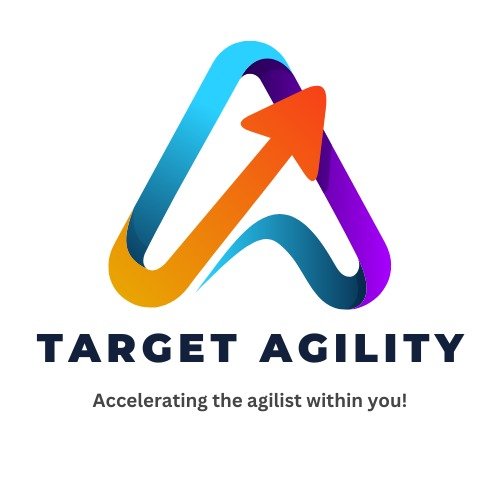Why Choose ICAgile: A Simple Guide to Elevating Your Agile Skills

In today’s fast-changing world, businesses are constantly seeking ways to improve and adapt. Agile methodologies have become a go-to choice for companies looking to manage projects more effectively, enhance teamwork, and deliver value faster. Among the many Agile certification options, ICAgile (International Consortium for Agile) stands out for its learner-focused and flexible approach. Here are some key reasons why ICAgile is a great choice for advancing your Agile skills and mindset. 1. Focus on Practical Learning ICAgile takes a different approach to learning compared to many other certification programs. Instead of focusing on exams and memorizing facts, ICAgile emphasizes real-world experience and deep understanding. The goal is to help people truly learn by doing, not just studying. The courses encourage hands-on practice and reflection, helping learners develop skills they can apply to actual projects. This makes ICAgile certifications more than just a piece of paper; they represent real knowledge and a genuine Agile mindset. 2. Variety of Learning Paths ICAgile offers a wide range of learning tracks tailored to different roles and needs within the Agile world. Whether you’re a project manager, a business analyst, a developer, or a leader, ICAgile has a course designed just for you. The two main paths are: Within these paths, you can choose from specializations like Agile Coaching, Team Facilitation, or Leadership. ICAgile certifications are structured to allow you to advance from beginner to expert as you grow, giving you a clear way to improve your skills over time. 3. Globally Recognized ICAgile certifications are respected worldwide. As Agile becomes more popular across industries, having a globally recognized certification can help you stand out in your career. ICAgile-certified professionals are known for not just understanding Agile principles but also for applying them effectively in their work. With training partners around the globe, ICAgile certifications are valued in many regions and industries, from tech to marketing and even HR. 4. Staying True to Agile Values ICAgile’s training programs focus on the core values and principles of the Agile Manifesto. This means that the certification is not just about using tools or following processes; it’s about understanding the human side of Agile, such as teamwork, flexibility, and delivering value. By choosing ICAgile, you’re aligning with an organization that values collaboration, adaptability, and continuous improvement. It’s not just about “doing Agile” but about “being Agile” in your mindset and approach. 5. Flexible Training Options ICAgile is known for its flexibility. Instead of having one fixed curriculum, it sets learning objectives and allows its accredited partners to create courses that meet those goals. This means you can find training that suits your industry or personal preferences. Additionally, ICAgile certifications don’t expire. Unlike other certifications that require you to retake exams or pay renewal fees, ICAgile certifications last a lifetime. This approach supports continuous learning, allowing you to focus on growing your skills instead of worrying about renewals. 6. Commitment to Continuous Improvement One of the key ideas behind ICAgile is continuous learning and improvement. Their courses encourage learners to reflect on their experiences, learn from them, and make changes as needed. This focus on growth ensures that Agile professionals can adapt to changes in their business environment and keep improving their skills. This mindset is ideal for Agile professionals who want to not only improve their processes but also drive innovation in their organizations. ICAgile helps Agile practitioners stay ahead of trends and best practices by fostering a culture of learning and improvement. Conclusion ICAgile offers a flexible, practical, and values-driven approach to Agile certification. Whether you’re just starting out or you’re already an experienced Agile practitioner, ICAgile provides a pathway to deepen your skills and adopt a lasting Agile mindset. By choosing ICAgile, you’re not just earning a certification—you’re gaining real-world knowledge and tools that will benefit both your career and your organization. “Click here to Join our ICAgile-certified course to master Agile skills and boost your career!”
What is the Benefit of CSPO Certification?

The Certified Scrum Product Owner (CSPO) certification helps professionals understand and excel in the role of a Product Owner within a Scrum team. Offered by the Scrum Alliance, this globally recognized certification is great for anyone involved in product development and management. Here are some key benefits of earning a CSPO certification: 1. Clear Understanding of the Product Owner Role The CSPO certification teaches you exactly what a Product Owner does. You’ll learn how to manage the product backlog, prioritize tasks, and work closely with different stakeholders. Since the Product Owner is responsible for delivering the right features at the right time, this certification helps you refine the skills needed to balance customer needs with business goals. 2. Better Job Opportunities Getting a CSPO certification can open up new career paths. Many companies are adopting agile frameworks, and there is a growing demand for skilled Scrum Product Owners. Having this certification on your resume shows employers that you understand Scrum and can effectively manage product development teams. This can lead to job roles in product management, project management, or business analysis. 3. Improved Team Collaboration A key part of the Product Owner’s job is to ensure good communication between the development team and stakeholders. With CSPO training, you’ll learn how to keep everyone aligned on project goals and priorities. This makes it easier to work with cross-functional teams and ensure that the product development is moving in the right direction. 4. Better Knowledge of Agile Practices As agile methods like Scrum are becoming common in many industries, CSPO certification helps you deepen your understanding of agile practices. You will learn how to apply Scrum in your organization to deliver products more efficiently. Even if you’re already familiar with Scrum, the certification will give you advanced insights into managing agile product development. 5. Higher Salary Potential Certified Scrum Product Owners often earn more than those without certification. Since the CSPO brings specialized skills to the table, companies are willing to pay a premium for certified professionals. This makes it a valuable investment if you’re looking to grow in your career and earn a higher salary. 6. Ability to Adapt to Change In today’s fast-changing business world, customer needs and market conditions can shift quickly. The CSPO certification prepares you to adapt to these changes efficiently. You’ll learn how to be flexible in adjusting priorities and guiding your team to respond quickly to new business opportunities or market trends. Conclusion The CSPO certification offers numerous benefits, from improving your job prospects to equipping you with essential skills for managing product development. It also helps you communicate better with teams and stakeholders, stay updated with agile practices, and adapt to changes in the business environment. Overall, it’s a great way to strengthen your role as a Product Owner and deliver high-value products more effectively. “Kick Start Your Journey with Our CSPO Certification Course click here.”
Why Getting a PSPO Certification is a Game-Changer in 2024
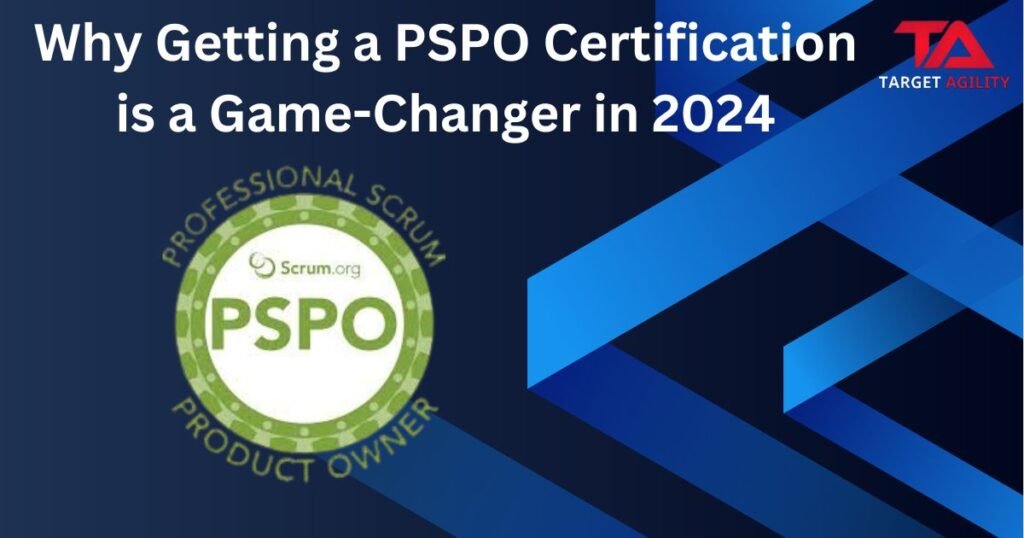
The Professional Scrum Product Owner (PSPO) certification is more important than ever in 2024, especially as businesses continue to embrace Agile methods to stay competitive. If you’re aiming to step up your product management game, the PSPO certification can open doors and boost your career in significant ways. Let’s break down why this certification is such a valuable asset today. 1. High Demand for Agile Skills In 2024, companies are relying heavily on Agile, especially Scrum, to adapt quickly and deliver products that meet customer needs. Product Owners play a crucial role in this process, making sure the right features are built and that the development team stays on track. A PSPO certification shows you understand how to do this effectively. By getting certified, you’ll have the skills to help companies deliver value faster, a trait that’s highly sought after in today’s fast-paced business world. 2. Better Career Opportunities The job market is tough, and having specialized skills can set you apart. A PSPO certification tells employers that you know how to manage products and work within Scrum teams effectively. In 2024, companies are looking for Product Owners who can not only manage backlogs but also drive business value through strategic decisions. This certification can help you land higher-paying jobs or take your career to the next level, whether that’s becoming a Product Manager or a senior leader in an Agile team. 3. Real-World Skills That Deliver Results The PSPO certification isn’t just about learning theories—it’s about practical skills you can apply right away. Companies in 2024 need Product Owners who can solve real problems, like managing priorities, working with stakeholders, and planning product releases. With PSPO training, you’ll learn how to streamline processes, increase team efficiency, and deliver products that make an impact. 4. Commitment to Continuous Learning Scrum and Agile methods are always evolving. By getting a PSPO certification, you’re showing that you’re committed to staying current with the latest trends and practices. In a world where markets and technology change quickly, this willingness to adapt is essential. Employers value professionals who are dedicated to continuous improvement, and PSPO-certified individuals are well-positioned to keep their skills sharp. 5. Global Recognition and Networking One of the great things about the PSPO certification is its global recognition. Scrum is widely used in industries like tech, healthcare, finance, and beyond. Having this certification opens up job opportunities worldwide and connects you to a global community of professionals. Through events, online forums, and networking opportunities, you’ll gain access to new ideas and experiences that can further advance your career. Conclusion In 2024, the PSPO certification is a game-changer for anyone looking to grow in product management. It provides you with practical tools, strategic thinking, and a commitment to lifelong learning that will keep you relevant in today’s ever-changing job market. Whether you’re just starting out or looking to advance, the PSPO can help you stand out and succeed. “Become a Product Leader – Join Our PSPO Course Today!”
Why Scrum Masters Are More Important Than Ever
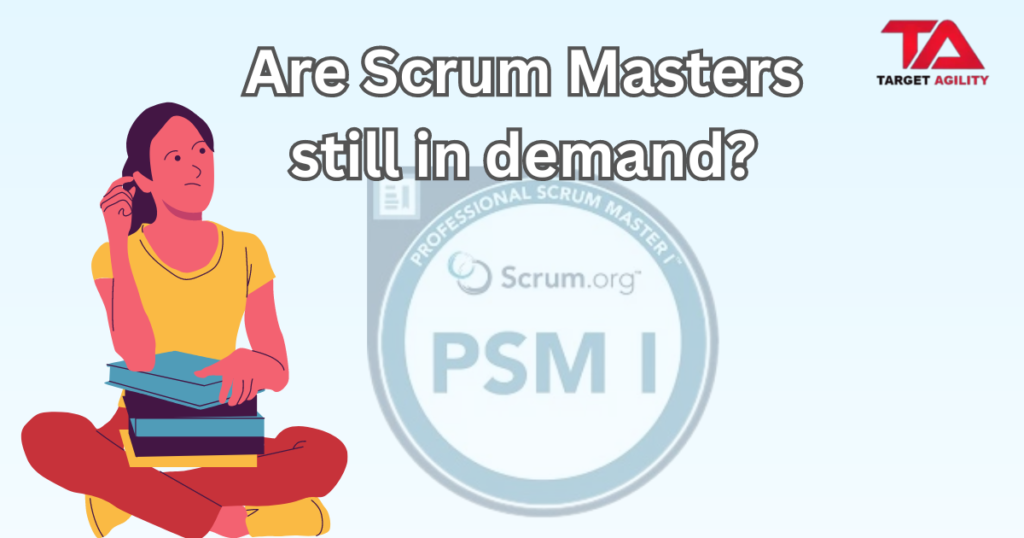
As businesses adapt to fast changes in technology and market needs, many have turned to Agile methods to manage projects and deliver results quickly. Among the different Agile frameworks, Scrum is one of the most widely used. A key player in the Scrum process is the Scrum Master—a person responsible for helping teams work efficiently and follow Scrum practices. But with the constant changes in the workplace, one might wonder: Are Scrum Masters still in demand? The short answer is yes. Let’s take a look at why Scrum Masters continue to be important and how their role has changed over time. The Importance of Agile Agile methodologies, like Scrum, Kanban, and Lean, have become essential for delivering projects efficiently. They allow teams to work in short cycles, adapt to changes, and deliver value to customers faster. As more companies adopt Agile to stay competitive, the need for Scrum Masters grows. Scrum Masters help teams understand and follow the principles of Agile, encouraging collaboration, flexibility, and continuous improvement. What Does a Scrum Master Do? Many people think that Scrum Masters are project managers who assign tasks, but their role is actually quite different. A Scrum Master acts as a servant-leader, meaning their job is to support the team and help them succeed. Some key responsibilities include: These responsibilities highlight why Scrum Masters are so important—they help teams communicate better, collaborate efficiently, and improve their workflows, which are crucial in today’s fast-paced business world. Demand Across Different Industries While Scrum began in software development, its principles are now being used in a variety of industries, such as marketing, healthcare, finance, and more. As these industries adopt Agile, the demand for Scrum Masters has expanded beyond tech companies. Businesses in areas like manufacturing, logistics, and even government agencies are turning to Agile frameworks like Scrum to increase efficiency and deliver better results. For example, in industries like healthcare or finance, where there are strict regulations and fast-changing requirements, Agile helps teams meet goals more quickly. Scrum Masters in these sectors help teams navigate complex rules while maintaining flexibility and delivering high-quality results. How the Scrum Master Role Has Evolved As more companies adopt Agile, the role of the Scrum Master has also changed. Today’s Scrum Masters need to know more than just the basics of Scrum. In larger organizations, they may need to be familiar with scaling Agile frameworks, like Scrum@Scale, SAFe, or LeSS, which are used to manage larger teams or multiple projects at once. Additionally, the shift to remote work has changed how Scrum Masters operate. Virtual teams come with new challenges, such as ensuring effective communication across different time zones. Scrum Masters now play a key role in keeping remote teams connected and ensuring they collaborate smoothly, even when they are not in the same location. Why Scrum Masters Are Valuable Because of the wide range of tasks they handle, Scrum Masters bring significant value to organizations. They help reduce the time it takes to get products to market, improve the quality of work, and foster better teamwork. These benefits have kept Scrum Masters in demand across industries. Platforms like LinkedIn and Glassdoor consistently rank Scrum Master as a top job, especially in tech and project management fields. Conclusion: Are Scrum Masters Still Needed? Absolutely. Scrum Masters are still in high demand, and their role is becoming even more important. As more companies embrace Agile methodologies, both in technical and non-technical areas, the need for skilled Scrum Masters continues to grow. In addition, the challenges of remote work and managing larger teams make their role even more essential. If you’re thinking about becoming a Scrum Master or already working as one, you can feel confident that your skills will remain valuable for many years to come. “Ready to take your career to the next level? Join our Scrum Master course today and make it happen! Click here to get started!”
What Is a Release Train Engineer: Roles, Responsibilities, & Skills

A Release Train Engineer (RTE) plays a key role in Agile frameworks, particularly in the Scaled Agile Framework (SAFe). The RTE is like the head Scrum Master, overseeing a group of teams called the Agile Release Train (ART), which work together to deliver value consistently. The RTE’s job is to ensure that everything runs smoothly, teams stay aligned, and they meet the organization’s goals. In this blog, we’ll break down the RTE’s roles, responsibilities, and the skills they need. What Does a Release Train Engineer Do? The main job of an RTE is to make sure the Agile Release Train (ART) runs effectively. This involves helping teams stay in sync, solving issues, managing risks, and promoting collaboration. Here are some important tasks RTEs handle: Responsibilities of a Release Train Engineer An RTE’s responsibilities cover both the day-to-day operations of the Agile Release Train and the overall success of the program. Key responsibilities include: Skills Needed for a Release Train Engineer An effective Release Train Engineer needs a combination of technical knowledge, leadership, and communication skills. Some of the essential skills include: Conclusion The Release Train Engineer is essential to the success of the Agile Release Train in a SAFe setup. They ensure teams are aligned, risks are managed, and value is consistently delivered. Understanding the RTE’s roles, responsibilities, and necessary skills helps organizations run more efficient Agile processes and continuously improve their work. “Ready to kickstart your RTE journey? Click here to begin your adventure!”
How OTT Platforms Use Agile Methods to Deliver Better User Experiences

Over-The-Top (OTT) platforms like Netflix, Amazon Prime, and Disney+ have changed how we watch TV shows and movies. To keep their users happy, they need to keep up with changes in technology and what viewers want. One of the best ways to do this is by using Agile methods. Agile is an approach that helps teams work faster, be flexible, and make improvements quickly. What is Agile? Agile is a way of working that focuses on breaking big tasks into smaller, manageable parts. Teams work on these small parts in short time periods called “sprints.” After each sprint, they review their work and make changes if needed. Agile allows teams to adapt to changes quickly and improve their work continuously. For OTT platforms, this means they can respond to feedback, try new ideas, and improve the user experience regularly. How Agile Helps OTT Platforms Improve User Experience OTT platforms have to keep adding new features to stay competitive. Whether it’s improving the way users find content or fixing bugs, platforms need to work quickly. Agile allows teams to release updates in small steps, so users get new features more frequently. For example, Netflix might update how it recommends shows to users or make the interface easier to use. With Agile, they can test these changes quickly, get feedback, and make improvements without waiting too long. Agile encourages platforms to involve users in the development process. Instead of making big changes all at once, they can introduce small updates based on real user feedback. OTT platforms often test new features with a small group of users first. They gather feedback, make improvements, and roll out the changes to everyone. This way, they ensure that new updates are based on what users actually need, making the experience more personalized and user-friendly. OTT platforms use data to personalize what you see. Agile helps them experiment with how they recommend shows and movies to users. Teams can gather data, test different approaches, and see which one works best. For instance, Netflix can analyze viewing habits and adjust its recommendation system using Agile methods. This way, it continuously improves how well the platform matches users with content they’ll enjoy. Agile encourages collaboration between different teams, such as designers, developers, and marketing. Each team brings its expertise to the table, ensuring that all aspects of the platform are covered. For example, one team might focus on improving video quality, while another works on the user interface. Agile practices help them stay connected and adjust their priorities as needed, so every part of the platform works together smoothly. As OTT platforms expand to new regions or introduce new devices, they need to adapt quickly. Agile provides the flexibility to make these adjustments without disrupting the overall workflow. Teams can shift their focus based on new challenges, such as launching in a new country or supporting a new device. This flexibility ensures that OTT platforms can grow and evolve while still delivering a great user experience. Conclusion Agile methods help OTT platforms like Netflix and Amazon Prime stay on top by allowing them to make frequent improvements, respond to feedback, and stay flexible. By using Agile, these platforms can quickly add new features, improve personalization, and ensure that their service is always meeting user needs. This helps them provide a better, more enjoyable experience for their users, keeping them ahead in a competitive market.
What Does a Product Owner Do, and Why Are They Important?

In software development, the Product Owner (PO) is a key person who helps make sure the team works on the right things to bring value to the business. The role is important in Agile methods, especially in a process called Scrum. But what exactly does a Product Owner do? When do they do these tasks, and why are they so important? What Does a Product Owner Do? A Product Owner acts as a link between the business and the development team. Their job is to make sure the team focuses on the tasks that matter most. They gather information from stakeholders (people with an interest in the project), prioritize tasks, and decide what will give the most value to the product. In Scrum, the Product Owner manages a list of things the team needs to do, called the product backlog. This backlog includes features, updates, and fixes that the team will work on in future sprints (short work cycles). Key Responsibilities of a Product Owner Why Is the Product Owner So Important? Conclusion The Product Owner plays a crucial role in helping the development team deliver the right features to meet business goals and customer needs. They define the product vision, manage the product backlog, write user stories, and make real-time decisions to keep the project moving. Acting as a bridge between stakeholders and the development team, the Product Owner ensures that the team focuses on the most valuable work, making their role vital for the success of any Agile project.
How to Apply Agile in Business: A Simple Guide

Agile is a popular way of managing projects that helps businesses become more flexible, improve teamwork, and work more efficiently. Originally designed for software development, Agile has now spread to many industries, like marketing, finance, and operations. If you’re interested in using Agile for your business, this guide will show you how to get started step-by-step. What is Agile? Before we dive into applying Agile, it’s important to know what it is. Agile is a project management method where teams work in short cycles (called sprints) to deliver small parts of a project, instead of trying to complete everything at once. It focuses on teamwork, flexibility, and gathering customer feedback at different stages. Agile follows four key principles: Step 1: Build a Strong Team Agile depends on teamwork, so the first step is to put together a group of people with different skills and experiences. This helps get multiple perspectives and allows for quicker decision-making. For example, if you’re working on a marketing project, your team might include people from design, content, and data analysis. Everyone will work together on small tasks and share responsibilities. There are key roles in an Agile team: Step 2: Start with a Small Project Introducing Agile can be challenging, so start small. Choose a simple project that has some risk but won’t affect the business too much. This can be something like launching a new product, running a marketing campaign, or improving an internal process. Break the project into smaller tasks that can be completed in short cycles, usually two to four weeks. Each cycle, or sprint, should produce a usable result, like a new product feature or a piece of marketing content. After each sprint, get feedback, evaluate what worked and what didn’t, and use that to improve the next sprint. Step 3: Use Agile Tools Agile often relies on tools to help organize and track tasks, communicate, and manage the workflow. Some popular Agile-friendly tools include: These tools can make it easier to manage tasks and keep everyone on the same page. Step 4: Use Key Agile Practices Once you have a team and the tools, it’s time to start using Agile practices, such as: Step 5: Expand Agile to the Rest of the Business Once you’ve successfully used Agile in a small project, you can start expanding it to other teams or areas of the business, like marketing, operations, or customer service. Each department may need to adjust the process to fit their specific needs, but Agile principles can be applied everywhere. To help with scaling Agile across the business, consider using frameworks like: Step 6: Create an Agile-Friendly Culture For Agile to truly succeed, it needs to be part of the company culture. This means encouraging a mindset of flexibility, teamwork, and continuous improvement. Leadership plays a big role in promoting this culture by allowing teams to experiment, learn from mistakes, and make decisions based on data. Open communication and breaking down barriers between teams are essential for building an Agile-friendly culture. Over time, this culture will help your business respond faster to changes, come up with new ideas, and improve overall efficiency. Conclusion Applying Agile in your business is a powerful way to improve flexibility, collaboration, and results. By building the right team, starting with a small project, using the right tools, and following Agile practices, your business can adopt Agile and succeed in today’s fast-paced world. Agile helps companies stay innovative and competitive by focusing on continuous improvement and customer feedback, ensuring they’re always delivering the best possible results.
Scrum Master vs. Project Manager: What’s the Difference?

When it comes to managing projects, two roles often come up: Scrum Master and Project Manager. Both are important, but they work in different ways and have different responsibilities. Understanding what sets them apart can help you decide which one is the right fit for your project or organization. What Does a Scrum Master Do? A Scrum Master works within Agile frameworks, specifically the Scrum methodology. Agile is all about being flexible and working in small, manageable steps. The Scrum Master’s main job is to guide the team, making sure everyone is following the Scrum process and staying productive. Key Responsibilities: A Scrum Master doesn’t make decisions about the project’s budget, timeline, or scope. Instead, they focus on making sure the team works well within the Agile framework. What Does a Project Manager Do? A Project Manager is often found in more traditional project management methods like Waterfall, where projects follow a strict sequence. The Project Manager is responsible for the entire project, managing both the team and outside stakeholders. Key Responsibilities: Unlike Scrum Masters, Project Managers handle everything from start to finish, including making key decisions about timelines, resources, and the overall direction of the project. Main Differences Conclusion: Which Role is Better? Neither role is better than the other; it really depends on the type of project and how the company likes to work. A Scrum Master might be better for Agile projects that need flexibility and teamwork. On the other hand, a Project Manager might be a better fit for long-term projects that require detailed planning and strict deadlines. Both roles are valuable in their own ways, and the best choice depends on the project’s needs and goals.
Boost Your Scrum Performance: An Easy Guide for Agile Teams

Scrum is a popular method used to manage projects, especially in software development. It helps teams work together efficiently and deliver high-quality products faster. However, even though Scrum is straightforward, it takes practice and effort to get really good at it. In this guide, we’ll share simple tips to help you and your team improve your Scrum performance. 1. Learn the Basics Well To do well in Scrum, everyone on the team needs to understand how it works. This means knowing the three main roles (Product Owner, Scrum Master, and Development Team), the five key meetings (like Sprint Planning and Daily Stand-up), and the three important documents (Product Backlog, Sprint Backlog, and Increment). Tip: Make sure everyone on the team knows their role and responsibilities. Consider reading the Scrum Guide or attending a Scrum workshop to refresh your knowledge. 2. Set Clear and Achievable Goals One common problem in Scrum is unclear or unrealistic goals. During Sprint Planning, the Product Owner and the team should work together to create specific, doable goals for each sprint. These goals should fit within the sprint time and match the overall project vision. Tip: Use user stories or other tools to break down tasks clearly. This helps everyone know what they’re working toward and stay focused. 3. Improve Sprint Planning and Backlog Organization Good Sprint Planning is key to a successful sprint. This means making sure the Product Backlog is organized and that only the most important tasks are included in the Sprint Backlog. Regular backlog grooming helps keep things clear and prioritized. Tip: Have regular meetings to review and clean up the backlog. This makes planning sprints easier and more effective. 4. Encourage Communication and Teamwork Scrum works best when the team communicates well. The Daily Stand-up is one way to ensure everyone stays on the same page, but team members should communicate openly throughout the sprint, not just in meetings. Tip: Create an environment where team members feel comfortable speaking up about challenges or ideas. Use tools like Slack or Microsoft Teams to stay connected, especially if your team works remotely. 5. Make the Most of Retrospectives The Sprint Retrospective is a valuable meeting where the team reviews what went well and what needs improvement. It’s a chance to find ways to get better each sprint. Tip: Make sure retrospectives are open, honest, and focus on taking actions to improve. Then, apply those lessons in the next sprint to keep getting better. 6. Keep Daily Stand-ups Short and Focused The Daily Stand-up is a quick meeting designed to help the team stay aligned. However, it can easily become too long or off-topic if not managed well. Tip: Stick to the basics: What did you do yesterday? What are you working on today? Do you have any blockers? This keeps the meeting short and effective. 7. Support the Scrum Master The Scrum Master plays a key role in making sure the team follows Scrum rules and improves over time. They help remove obstacles and make sure the team can work smoothly. Tip: Give the Scrum Master the support they need to solve problems and keep the team focused. A strong Scrum Master helps the team perform at its best. 8. Track Progress with Metrics To improve, it’s important to measure how the team is doing. Metrics like sprint velocity, burndown charts, and cycle time can show whether the team is improving or facing problems. Tip: Regularly review these metrics during Sprint Reviews or Retrospectives. Use them to start conversations about how the team can get better. 9. Encourage Responsibility and Ownership Scrum teams work best when everyone takes responsibility for their work. When team members feel accountable, they are more motivated and engaged in achieving the sprint goals. Tip: Encourage a culture where team members take ownership of their tasks. This builds trust and makes the team stronger. 10. Stay Flexible and Adaptable Scrum is designed to be flexible. Be ready to adapt and make changes when necessary, especially as the project or client needs evolve. Scrum’s iterative process allows teams to adjust as they go. Tip: Don’t be afraid to make changes during the project. Staying flexible helps the team respond to new challenges and deliver better results. Conclusion Improving Scrum performance takes continuous effort, but by focusing on understanding the framework, setting clear goals, improving communication, and being open to change, your team can deliver better results more efficiently. Scrum is all about collaboration, adaptability, and continuous improvement, so encourage your team to embrace these values.
Scrum Tools

Scrum is a framework for software development teams to develop, deliver, and sustain complex products. It allows companies to continuously deliver value to their customers. You can think of Scrum as a set of tools to get work done. What are Scrum tools? Scrum allows teams to take complex projects and split the work into manageable groups of tasks. Sprints, the smaller and more focused projects, quickly and efficiently address the highest-priority tasks. Types of Scrum tools The size and complexity of your project and team will determine the best Scrum tool. While some tools focus purely on task management, tools designed for Scrum offer robust collaboration and communication platforms. 9 best Scrum tools for project management Many factors impact which Scrum tool is the best for your project. Some factors to consider include the size and structure of your team, the complexity of your projects, other tools you want to integrate, budget constraints, and training requirements. The following are nine top Scrum tools used by project managers and Scrum masters: 1. Best for backlog management: Jira Software Jira Software is the #1 choice among Agile software development teams. It includes templates to break down complex projects into manageable tasks for effective backlog refinement and sprint planning. With real-time visual status updates, teams can quickly respond to changes and roadblocks. It also supports remote and geographically dispersed teams seamlessly with always-up-to-date task scheduling and tracking. 2. Best for documentation and knowledge management: Confluence With Confluence, you can house all documents and related information in a central repository. Whether it’s customer surveys, requirements documents, product strategy, or other supporting data, you can seamlessly integrate knowledge management into the product development lifecycle and streamline collaboration. 3. Best for sprint planning: Jira Software Jira Software makes sprint planning easier by putting the backlog at the center. It helps the team estimate stories, adjust scope, and prioritize issues in one location. Atlassian’s sprint tutorial can also help teams get up to speed quickly. 4.Best for sprint retrospective: Confluence whiteboards With Confluence whiteboards, teams can brainstorm, visualize, and turn ideas into action in real time or asynchronously. With features like stamps, votes, and timers, teams can make collaborative decisions and then edit Jira issues and other pages without leaving the whiteboard. This makes Scrum ceremonies like a sprint retrospective easy. 5. Best for prioritizing ideas and building roadmaps: Jira Product Discovery Jira Product Discovery offers features for prioritizing ideas and building roadmaps. It allows teams to bring insights and ideas together, collaborate, and create a product roadmap everyone can support. 6. Best for virtual meetings: Zoom Zoom virtual meetings erase the distance between geographically dispersed team members. With Zoom’s extensive features, teams can host virtual meetings and collaborate in real-time. They can also record meetings and decisions for those who can’t attend. 7. Best for real-time communication: Slack Slack offers easy access and real-time targeted communication when just a few team members need to quickly share information or ask questions. Channels allow teams to create focused areas, such as C++ developers working on a specific product, to keep tasks moving forward without unnecessarily interrupting others. 8. Best for team collaboration: Jira Work Management Jira Work Management allows teams to manage projects across the company, giving members real-time project data. Create dependencies and build automations between Jira Software and Jira Work Management so you overlook nothing, especially when disparate groups are working on the same project. 9. Best for iteration planning: Trello Trello’s easy-to-use, highly visual interface for project management supports small teams with iteration planning, automating repetitive tasks, and tracking sprints. It also integrates with commonly used tools such as Slack. Conclusion In conclusion, mastering project management in the Scrum framework requires the right set of tools that align with the principles of agility and collaboration. The journey to finding the best Scrum tools involves exploring options that suit your team’s unique needs, promote transparency, and enhance overall productivity. Registration Process To Register for Scrum Courses in Target Agility Such as PSM, PSPO The registration process for agility courses is simple and intuitive. Click Here to Register for PSM I Course REGISTER HERE
Scrum In The Age Of AI: Embracing Automation And Continuous Improvement

Introduction: Artificial intelligence (AI) and technology are developing at a rapid pace, changing industries and employment landscapes and ushering in a new era of work. A troubling tendency has been brought to light in recent Department of Labor reports: there is a negative net labor demand for positions in production, food service, customer support, and sales. It is critical to examine the ethical aspects of this shift and comprehend the consequences for the workforce and the GDP as a whole as artificial intelligence (AI) and automation become more prevalent. The Impact of AI on Traditional Jobs: AI-powered devices are replacing human labor in production, food service, customer service, and sales industries. These machines perform operations with accuracy and efficiency, eliminating the need for human labor. Automated systems in food service and customer service are also undergoing a shift. Outsourcing had the First Effect : We sent our everyday tasks, development, and support to third-world countries, and in return we received subpar work at a third of the cost. McDonald’s began outsourcing its drive-through windows to Indian call centers before realizing that communication barriers were too great, particularly when done through a car window. McDonald’s is currently utilizing voice relays, mobile apps, and kiosks with AI. The Ethical Imperative: Unquestionably, integrating AI into the workforce increases efficiency and reduces costs, but it also presents ethical questions. Human workers being forced out of traditional roles might result in a loss of skills and expertise as well as employment insecurity and economic disparity. It is imperative that society take these moral issues into account and proactively create laws that put worker welfare first. Responsible AI Implementation: Embracing responsible and ethical AI is key to mitigating the negative consequences of automation. Employers need to put employee welfare first and give priority to tactics that use AI technologies. This involves funding programs for retraining and upskilling employees in order to provide them the skills required for new employment in the digital economy. One excellent illustration of this is the retraining of thousands of current employees by Amazon to operate as package pushers instead of human workers! Government Role in Shaping the Future: Governments will have a significant impact on how work is done in the future. The main goal of policymakers should be to provide a legal environment that promotes the ethical use of AI. This entails putting in place social safety nets to assist workers impacted by job displacement, encouraging transparency in AI decision-making processes, and developing norms for moral AI practices. The Impact on GDP: The shift to a workforce powered by AI will undoubtedly have an impact on GDP. Although there may be short-term disruptions during the early stages of automation, long-term benefits are probably in store. Enhanced effectiveness, ingenuity, and output have the ability to bolster economic expansion, thereby generating fresh employment prospects in developing fields concerning artificial intelligence creation, upkeep, and supervision. Conclusion: The evolving workforce with automation and AI demands a responsible approach, investment in human skill development, and worker welfare rules to ensure societal wellbeing and economic growth, promoting responsible AI use. Registration Process To Register for course in Target Agility of PSM I The registration process for agility courses is simple and intuitive. Click Here to Register for PSM I REGISTER HERE
The Evolution of Scrum & Complementary practices : Past, Present, and Future Trends
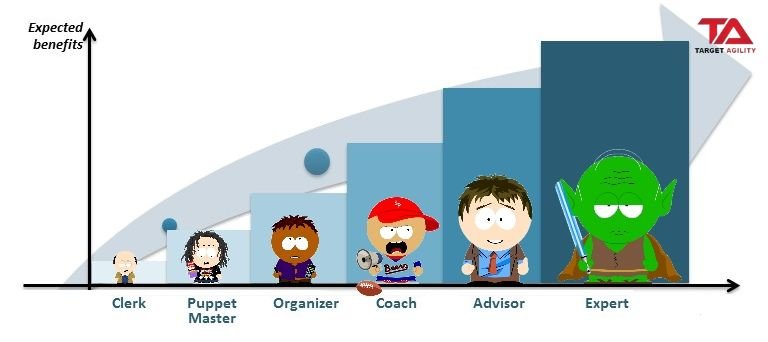
Introduction: This blog article explores the history, current state, and upcoming trends influencing Scrum and agile practices in software development, examining how they adapt to project management and technology demands. Thе Birth of Scrum: Scrum, an agile project management framework, emerged in the early 1990s as an alternative to the traditional waterfall model, offering a softer, more adaptable method for software development, derived from rugby. Thе Scrum Framеwork: The Scrum Guideline outlines the fundamental elements of Scrum, including roles, events, and artifacts, providing an organized, adaptable framework for gradual, iterative development. Currеnt Statе of Scrum In the present day, Scrum has established itself as the de facto agile framework for numerous enterprises across the globe. Its extensive use is evident in a number of industries beyond software development, such as marketing, finance, and healthcare. The Scrum framework is continually being updated and improved upon to better meet the diverse needs of many businesses and disciplines. Continual improvement, transparency, and teamwork continue to be the cornerstones of Scrum’s success. Emеrging Trеnds in Agilе and Scrum: Agile and Scrum practices are undergoing significant changes, with large enterprises increasingly adopting agile methodologies like Large-scale Scrum and Scaled Agile Framework. This shift also highlights the importance of seamless collaboration between development, testing, and operations. Rеmotе Collaboration The rise of remote work has made a change in the way agile teams collaborate necessary. Disparate classes now require virtual tools, video conferencing, and asynchronous communication, which challenges conventional ideas of co-location. Focus on Customеr Expеriеncе Scrum and other agile methodologies have always placed a strong emphasis on client happiness. Nonetheless, there is an increasing trend toward a more comprehensive approach that considers every aspect of the customer experience, from post-launch assistance to product ideation. Data-Drivеn Dеcision-Making Agile teams are using metrics and data to help them make well-informed decisions. Teachers are encouraged to use quantitative data to identify areas for improvement and assess the effects of adjustments because of the emphasis on empirical process control. Conclusion Scrum’s resilience and adaptability in changing industries are evident, with future evolution influenced by new technologies, scaling practices, and integration of agile principles, enabling teams to overcome obstacles and seize opportunities.
Scrum Ceremonies

Scrum is a lightweight framework for product development, and if you’ve heard of it, you’ve probably heard of the Scrum ceremony. Scrum events, sometimes referred to as scrum ceremonies, are milestone rituals that serve as guidelines for sprints, which are the two- to four-week workflow units that comprise Scrum projects.Scrum Masters serve as the leaders of Agile Scrum events, just like they do for everything else in this framework. They are there to keep team members organized and sprints on schedule, and they typically take the form of meetings.What Are the 5 Scrum Ceremonies?Each Scrum ceremony has a specific purpose and framework. The five Scrum ceremonies are:Backlog refinementSprint planningDaily ScrumSprint reviewSprint retrospectiveTo facilitate productive meetings, the Scrum Master needs to understand each in detail.Backlog Refinement : The only Scrum activity that is not timed is backlog refining. Ensuring the relevance, clarity, and currentness of the product backlog is a continuous activity.Refinement of the backlog aims to:Scrum teams plan their sprints and visualize their future actions using the product backlog. The team may get off course if the backlog isn’t valuable and up to date.Backlog refinement keeps the sprint moving forward. It involves:Adding new items.Re-ordering current items based on priority.Removing outdated or redundant items.Ensuring each product backlog item (PBI) has user value.The Product Owner has the power to make executive decisions about the refinement process. They may work alone or collaborate with a team.Relevant terms:A prioritized list of items that would improve the final product is called the product backlog. Items could include specifications for the product, functionalities, bug patches, and more.The Product Owner is in charge of optimizing the value of the product and represents the interests of the client. Keeping up and overseeing the backlog is one of their main responsibilities. They have to explain the product goal and how each item advances the team’s progress toward it.Tips for success:Refine the backlog on a regular basis. Scheduling refinement time after the team has completed other Scrum activities could be beneficial.Arrange meetings for backlog refinement: Product owners that work in teams might find that setting out meetings just for backlog refining is beneficial. Establishing a designated meeting time prevents this crucial activity from getting overlooked.Keep it brief: Backlog refinement has no time limit, in contrast to other Scrum activities. But you should evaluate each item’s worth promptly and decide on it effectively.Sprint Planning : How it works:During the Daily Scrum, each team member shares what they accomplished the day before and what they plan to do that current day. It’s a chance to share existing or possible challenges and address them before they become problems.In most Daily Scrums, developers answer three questions:What have you completed since the last Daily Scrum?What will you complete by the next meeting?What’s getting in the way?The answers show the Scrum Master who needs support and where the sprint strategy might need adjustment. Goals of the Daily Scrum:The purpose of the Daily Scrum is to spot obstacles before they become impediments. Teams become more proactive and adaptable, which minimizes the need for more meetings.Additionally, the Daily Scrum enhances team communication. It makes a forum for discussing difficulties so that they don’t get lost. It also motivates team members to communicate with one another and solicit assistance when needed.Tips for success:Utilize it as a stand-up meeting: Traditionally, the Daily Scrum has all participants standing in the same room. The standing feature discourages lingering, which helps to keep the meeting on track.Involve remote team members in the conversation: If time zone differences prevent any Developers from attending at the same time, distribute the three questions via email or an internal communication system. Encourage brief responses of one or two sentences, and follow up as needed.Save feedback for later:Team members must be willing to share everything, including what is and isn’t working, in order for the Daily Scrum to be successful. Reminding teams that this isn’t a critique or feedback session is something Scrum Masters should do.As needed, follow up: During the Daily Scrum, the team is unable to address every issue. The words spoken during the ceremony should serve as a reminder to the Scrum Master and other Developers to check in and assist in removing obstacles throughout the day. That might need rearranging the backlog.Sprint Review:The sprint review is the second to last Scrum ceremony. It happens after the team has completed all assigned work and has something to show the Product Owner.Relevant terms:An increment is a stepping stone toward a product goal. Each increment must have an independent value and be usable. It also needs to work in conjunction with other increments. A Definition of Done specifies what the increment looks like when finished.How it works:The full Scrum team must attend the review. The Product Owner and Scrum Master may also decide to invite other stakeholders. It’s common for managers, customers and developers from other teams to attend.There are three steps to a sprint review:The Developers demonstrate completed increments for the Product Owner and other stakeholders. An increment is a unit of valuable work within Scrum.Stakeholders offer feedback and ask questions about the completed work. The team processes feedback and determines whether any adjustments need to happen in the product backlog.Covering all three steps should take no more than one hour per week of the sprint.Goals of the sprint review:Inspect the product as it develops. Non-Scrum teams often wait until a product is finished before gathering feedback. The sprint review allows stakeholders to evaluate the product while it’s in process. Check whether the team met its objectives. Stakeholders look at each deliverable and decide whether they are within parameters. The results determine the success of the sprint and set up action items for the next one.Evaluate the progress relative to product goals. Ceremony attendees look at what has changed with the project as a whole. Everyone discusses progress toward the broader goal, determining whether objectives were met. Tips for success:Don’t skip feedback and discussion: It can be tempting for teams to focus too heavily on the demo aspect of the
The Future Of Scrum Agility, Experiment Driven Development

The future of Scrum and agility is increasingly intertwined with Experiment-Driven Development (EDD), offering a powerful approach to innovation and adaptability within Scrum practices. Enhanced Scrum Agility:1.Scalable Scrum Practices: Beyond software development, scrum will continue to develop and find use in a variety of sectors, including marketing, education, and healthcare.2.Scrum Beyond IT: Scrum’s tenets will spread beyond IT departments, permeating corporate cultures and strategies and encouraging adaptability at all levels.3.Hybrid Methodologies: These strategies will become more popular and provide more flexible answers to challenging organizational problems. They blend Scrum with other Agile frameworks or methodologies. Experiment-Driven Development with Scrum: 1.Culture of Experimentation:Scrum teams are going to adopt a culture of experimentation more and more, using the empirical character of Scrum to test theories and spur creativity.2.Shorter Feedback Loops: Teams will be able to test hypotheses in less time by integrating experimentation into sprint cycles and using feedback to iterate quickly.3.Data-Backed Decision-Making:Experiment-driven development in Scrum will rely on data analytics and insights, enabling teams to make well-informed decisions based on immediate feedback. This is known as data-backed decision-making. Continuous Improvement and Adaptability: 1.Continuous Learning:Teams will put an emphasis on ongoing learning and adaptation, using feedback loops and retrospectives to improve procedures and methods.2.Product creation that is Flexible: Scrum’s flexibility will be highlighted even more, enabling more adaptable product creation that quickly reacts to shifting market demands.Technological Integration:3.AI and Automation: When AI-driven tools are integrated with Scrum methods, workflows are optimized, processes are streamlined, and predictive analytics are provided for improved decision-making.4.Blockchain and Security: Scrum teams’ approach to security and transparency in their development processes will be influenced by emerging technologies such as blockchain. Challenges and Opportunities:1.Cultural Shifts: A cultural transformation is necessary to embrace experimentation inside Scrum and create an atmosphere where failure is viewed as an opportunity for growth and innovation.2.Balancing Risks:Teams must find a balance between encouraging experimentation and skillfully managing risks in order to prevent any unfavorable effects. Conclusion:Scrum agility and experiment-driven development will continue to thrive in the future if teams and companies can innovate, adapt, and cultivate cultures that value change and growth. In this context, Scrum is not just a framework but also a way of thinking that promotes innovation and ongoing improvement.
10 Useful Facts About Agile Scrum
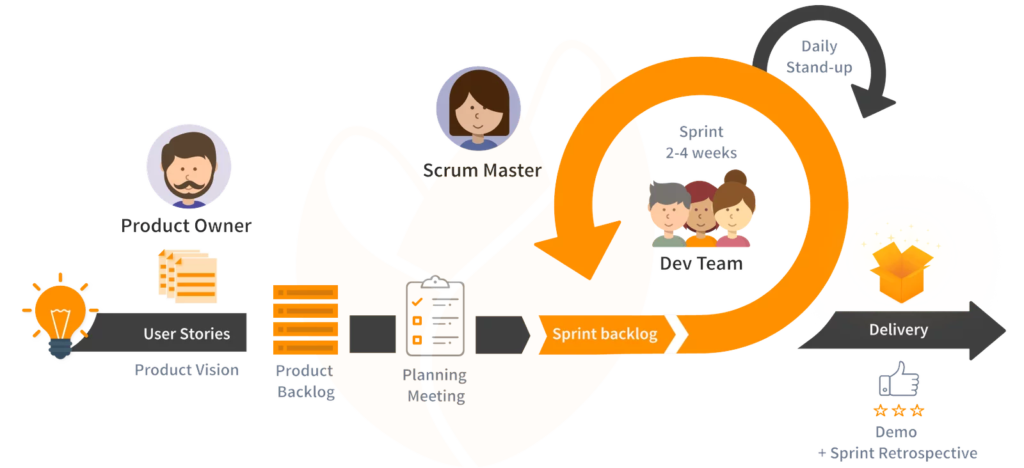
Agile Scrums emphasis on adaptability, teamwork, and producing value rapidly has made it a well-liked project management methodology. These are some helpful details regarding Agile Scrum that you may not be aware of: 1. Scrum before Agile Despite being closely linked to Agile https://www.wrike.com/project-management-guide/faq/what-is-scrum-in-agile/, Scrum was developed approximately five years before the Agile Manifesto. The framework was created in the 1990s by Ken Schwaber and it later served as a major source of inspiration for Agile principles. 2. Scrum is not a process Scrum is not a strict, sequential procedure like waterfall project management is. Rather, its main objective is to offer a structure that enables teams to operate in a flexible and iterative manner. 3. Scrum only has three roles Conventional project management frequently entails a wide range of positions with distinct duties. This is made simpler by Scrum, which merely defines the Product Owner, Scrum Master, and Development Team as the three main responsibilities.Product Owner, Scrum Master, Development Team. 4. Scrum is not just for software: Scrum’s concepts are widely employed in software development, but they may also be used in marketing, design, education, and healthcare, among other fields. It is appropriate for a variety of project types due to its emphasis on adaptation and ongoing improvement. 5. Scrum teams are limited to ten members Scrum places a strong emphasis on close teamwork and communication. The framework suggests limiting team sizes to a maximum of 10 members in order to preserve this dynamic. 6. Scrum revolves around sprints Sprints, which are relatively brief work cycles that last one to four weeks, are the central component of Scrum. Every sprint aims to deliver a particular set of features, facilitating prompt feedback and modifications. 7. A fifteen-minute stand-up meeting is called the Daily Scrum: Daily Scrums are stand-up meetings https://www.theserverside.com/blog/Coffee-Talk-Java-News-Stories-and-Opinions/Daily-Scrum-versus-Standup-Meeting-Agile-Differences-Similarities-Comparison-Rules-Agenda-Questions that Scrum teams hold every day to ensure openness and communication. These quick meetings, which last fifteen minutes, center on three main questions: How did I spend yesterday? How am I going to spend my day? Do you see any obstacles? 8. A prioritized list of features is called the Product Backlog The team’s ongoing list of features and requirements that it intends to deliver is called the Product Backlog. The Product Owner sets the order for the backlog items so that the team can concentrate on delivering the most important features first. 9. Scrum welcomes change Scrum is meant to be flexible, in contrast to traditional approaches that oppose modifications once planning has begun. The architecture promotes reordering priorities and adding new information. 10. Continuous improvement is the main focus of Scrum Scrum places a strong emphasis on a culture of ongoing learning and development. Retrospectives are scheduled meetings in which the team evaluates the outcomes of the previous sprint, pinpoints areas in need of development, and makes adjustments for the upcoming sprint. Conclusion Agile Scrum is a transformative project management framework that reshapes teams’ approach to complex tasks and goals, offering power and versatility.
The Surge in Scrum: Why Everyone Wants It

Scrum is taking the project management world by storm, and there’s a good reason for it. In this blog, we’ll explore why Scrum is in such high demand, what makes it tick, and how it’s changing the game for modern project teams. The Agile Shift To understand Scrum’s popularity, we need to look at the Agile revolution. Traditional project management methods struggled to keep up with the fast-paced business world. Then came Agile, a set of principles that prioritizes flexibility, teamwork, and customer satisfaction. Scrum, born out of Agile, became a top choice for organizations wanting to tackle the challenges of modern project delivery. Scrum Basics Scrum is a lightweight framework that offers a structured yet flexible approach to project management. It operates on the principles of transparency, inspection, and adaptation. Here are some key things that make Scrum special: The Scrum Boom Now, let’s look at why Scrum is so much in demand: Conclusion In summary, Scrum’s high demand in project management is because it effectively tackles the challenges of today’s fast-changing business environment. Its adaptability, teamwork, customer focus, and proven success stories make it a go-to framework for organizations striving to stay competitive. As the Agile movement continues to shape project management, Scrum stands out as a guide toward greater efficiency, customer satisfaction, and success. The journey of Scrum from a niche methodology to a global phenomenon reflects its enduring relevance and transformative impact on modern project management.
Scrum Framework: A Guide for New Team Members

In the fast-paced landscape of software development, staying agile and adaptable is crucial for success. Enter Scrum, a widely embraced framework that embodies these principles. For new team members, grasping the fundamental concepts of Scrum is essential. This blog post aims to unravel the core elements of Scrum, shedding light on how it encourages collaboration, transparency, and continuous improvement. Chapter 1: Scrum Basics At its heart, Scrum is an agile framework designed to boost the efficiency and effectiveness of teams tackling complex projects. It offers a structured yet flexible approach, emphasizing iterative and incremental development. The pillars of Scrum — transparency, inspection, and adaptation — form the bedrock of the framework. Chapter 2: Scrum Team Roles In the Scrum framework, three primary roles contribute to project success: the Product Owner, Scrum Master, and Development Team. Each role has distinct responsibilities, ensuring a well-balanced distribution of tasks and fostering collaboration. The Product Owner represents stakeholders, the Scrum Master facilitates the Scrum process, and the Development Team brings the product to life. Chapter 3: Scrum Tools Scrum utilizes several tools, or artifacts, to capture and communicate crucial information. The Product Backlog is a dynamic list prioritizing work to be done, while the Sprint Backlog is a subset chosen for a specific sprint. Burndown charts visually track work completed over time, providing insights into the team’s progress. Chapter 4: Scrum Events Scrum events are time-boxed ceremonies that structure the work of the Scrum Team. The Sprint is a fixed-length iteration where a potentially releasable product increment is created. Sprint Planning, Daily Stand-ups, Sprint Review, and Sprint Retrospective are key events ensuring team synchronization, transparency, and continuous improvement. Chapter 5: Sprint Planning Sprint Planning is a collaborative session where the team selects items from the Product Backlog for the upcoming Sprint. The Product Owner shares insights into high-priority items, and the Development Team collaborates on how to achieve the goals. By the end, the team commits to delivering a potentially shippable product increment by the Sprint’s conclusion. Chapter 6: Daily Stand-ups The Daily Stand-up is a brief, daily meeting where team members share progress, discuss impediments, and plan for the next 24 hours. This promotes communication, ensuring everyone is on the same page and fostering a sense of accountability and collective ownership. Chapter 7: Sprint Review At the Sprint’s end, the team conducts a Sprint Review to showcase completed work to stakeholders, inviting feedback. This ensures the product aligns with stakeholders’ expectations, and the Product Backlog is adjusted accordingly. Chapter 8: Sprint Retrospective The Sprint Retrospective is a dedicated time for the team to reflect on the previous Sprint, identifying successes and areas for improvement. It is a crucial step in the continuous improvement cycle of Scrum. Chapter 9: Scrum Values Scrum is not just about practices; it’s also grounded in five values: commitment, courage, focus, openness, and respect. These values guide the behavior of the Scrum Team, fostering a positive and collaborative working environment. Conclusion In summary, Scrum empowers teams to deliver value incrementally, adapt to changing requirements, and continuously improve. For new team members, embracing the principles, roles, artifacts, and events of Scrum is the first step toward unlocking its full potential. As they embark on their Scrum journey, a commitment to collaboration, transparency, and a mindset of continuous improvement will pave the way for successful and fulfilling projects.
Learning from Experience: The Key Principles in Scrum
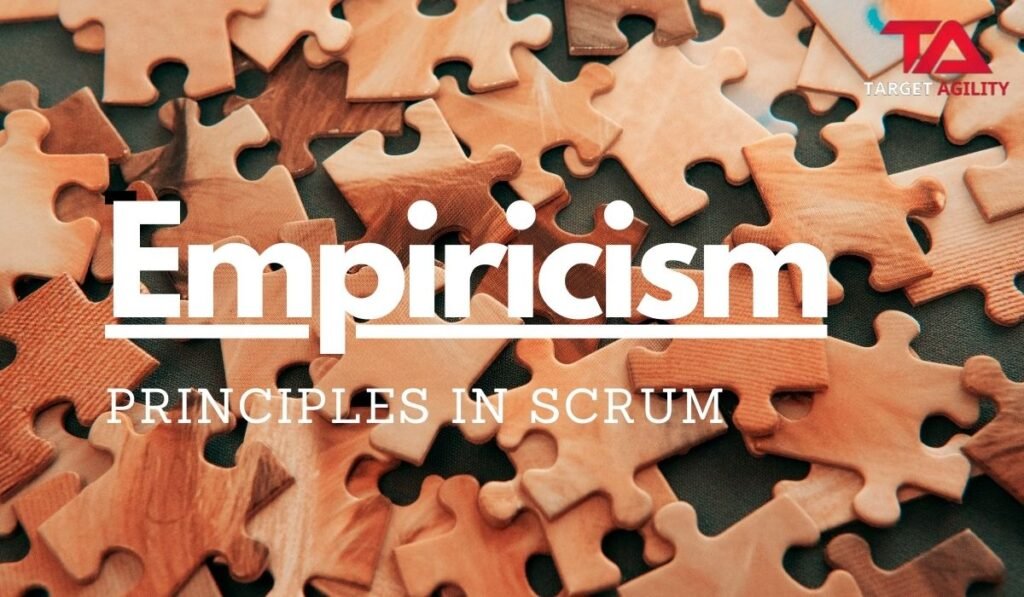
Imagine a way of working that focuses on learning from experience to make things better. That’s what empiricism is all about, and it’s especially crucial in the world of Scrum, an approach used in project management. Let’s take a closer look at how the Three Pillars of Empiricism—Sensation, Reflection, and Experience/Experimentation—are the backbone of Scrum, helping teams be successful and adaptable. Pillar 1: Sensation in Scrum In Scrum, Sensation is like paying attention to what’s happening during the project. It’s all about gathering information as the team works. Daily Standups and Sprint Reviews are meetings where the team shares what’s going well and what challenges they’re facing. This constant sharing of information helps the team stay aware and make decisions based on what’s actually happening in real-time. Pillar 2: Reflection in Scrum Reflection in Scrum means thinking about what’s been happening and figuring out how to make things better. The Sprint Retrospective is a special meeting where the team looks back at the recent work. They talk about what worked well, what didn’t, and how they can improve. It’s not just about finding problems; it’s also about coming up with solutions and getting better over time. Pillar 3: Experience and Experimentation in Scrum The third pillar is all about trying things out and learning from those experiences. In Scrum, this happens during Sprint Planning and the actual sprints. The team plans what they’ll work on based on past experiences and feedback. Then, during the sprint, they experiment with their plans. They try things out, see what works, and adjust their approach. It’s a continuous cycle of learning and improving. Connections in Scrum: These three pillars work together like a team. Sensation gives the team real-time information. Reflection helps them think about what’s happening and make improvements. Experience and Experimentation let the team try things out and learn from their actions. It’s a cycle that keeps going, helping the team adapt and succeed. Scrum’s Impact: Scrum’s success comes from using these Three Pillars of Empiricism. It helps teams manage projects by being flexible and learning from each experience. The way Scrum works, with its regular check-ins and constant improvements, ensures that teams can handle changes and deliver good results consistently. Conclusion: The Three Pillars of Empiricism—Sensation, Reflection, and Experience/Experimentation—are not just philosophical ideas; they are the guiding principles of Scrum. By paying attention to what’s happening, thinking about how to get better, and continuously learning from experiences, Scrum teams create a way of working that adapts to the challenges of project management. Embracing these principles, Scrum not only helps teams deliver great products but also fosters a culture of working together, being transparent, and always finding ways to improve—a true reflection of the power of learning from experience in the world of Agile methodologies.
Product Backlog Prioritization: Picking the Best Method for Your Team
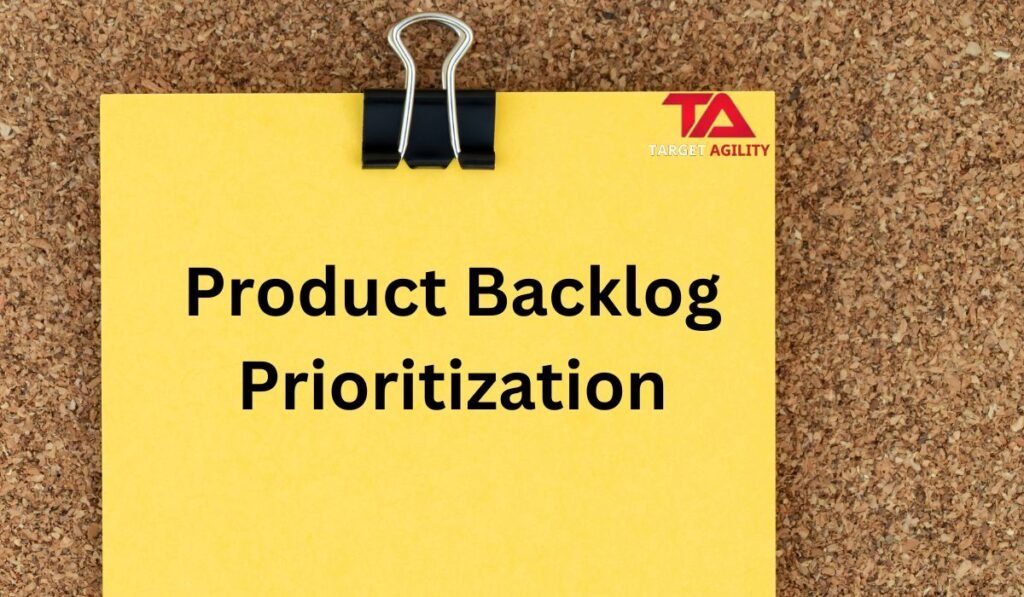
In the world of creating new stuff, having a plan is like having a map. For teams building things, that map is called a product backlog. But there are so many ways to decide what’s most important on that map. In this blog, we’ll look at different ways to prioritize and help you find the best one for your team. Why Prioritization Matters:Imagine you’re cooking a meal. You wouldn’t start with dessert if you haven’t cooked the main course. Prioritizing in product development is like deciding what to cook first so you serve the best meal to your customers. It helps teams focus on what’s most important and deliver better results. Different Ways to Prioritize: 1.Must, Should, Could, Won’t (MoSCoW) Method: 2. Kano Model: 3. Value vs. Complexity: 4. Eisenhower Matrix: 5. Buy a Feature: Choosing the Right Way: 1. Know Your Team: 2. Think About the Project: 3. Ask Your Team and Stakeholders: 4. Try Different Things: Conclusion:Choosing how to prioritize tasks in your product backlog is like picking the best route on a map. There’s no one right way, but by understanding your team, your project, and trying different methods, you’ll find the best way to deliver what matters most to your customers.
Which SAFe certification is the most valuable?
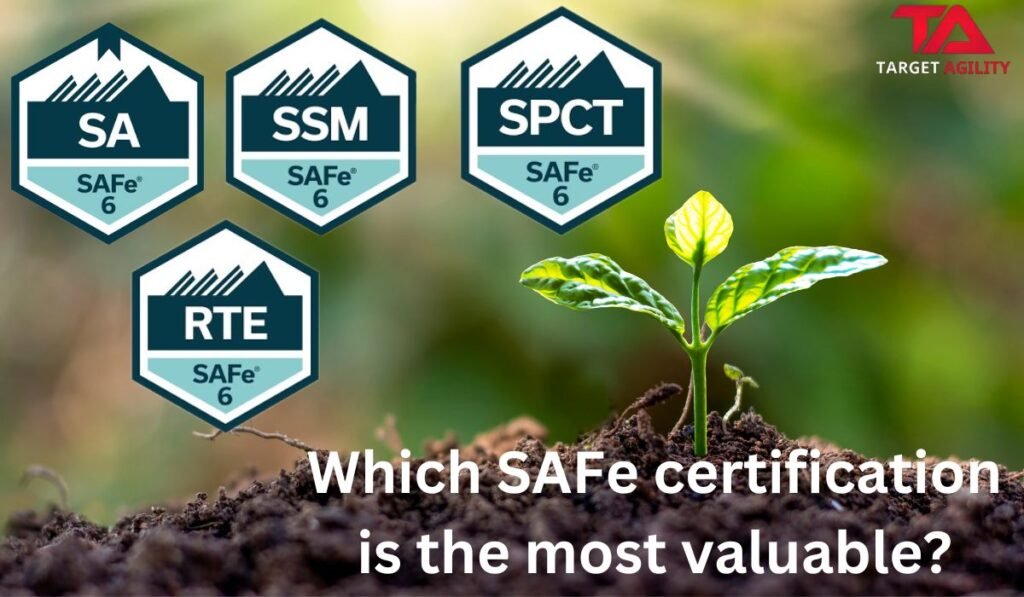
SAFe certification, is a way of doing agile and lean practices on a large scale in organizations. It’s super popular, and a lot of people want to be certified in it. There are different SAFe certifications for different jobs or levels of experience. The one that’s most valuable for you depends on what you want to do in your career. SAFe Agilist (SA) This is the basic certification. It’s good if you’re new to SAFe or just want to get a general idea of how it works. In the course, you learn about SAFe values, principles, roles, and how to put SAFe into action. SAFe Scrum Master (SSM) If you’re a Scrum Master working in a SAFe environment, this certification is for you. It teaches you how to do Scrum in a SAFe way, coach Scrum teams, and make Scrum work for big organizations. SAFe Advanced Scrum Master (SASM) This one is for Scrum Masters who really know their stuff and want to be SAFe experts. You learn how to solve problems with Scrum, use Kanban and engineering practices, and help big groups of teams. SAFe Release Train Engineer (RTE) Release Train Engineers plan and do SAFe Release Trains. This certification teaches you how to plan and run them, handle dependencies, and make them work well. SAFe Program Consultant (SPC) If you’re a consultant helping companies use SAFe, this certification is for you. It covers how to figure out if a company is ready for SAFe, make a plan for it, train and coach teams, and keep track of how well it’s going. To choose the right one for you, think about your job and how much you know about SAFe. Here’s a quick guide: Hope this helps you figure out which SAFe certification is right for you!
Excelling in 2023: Why Getting PSM Certified Is a Big Deal
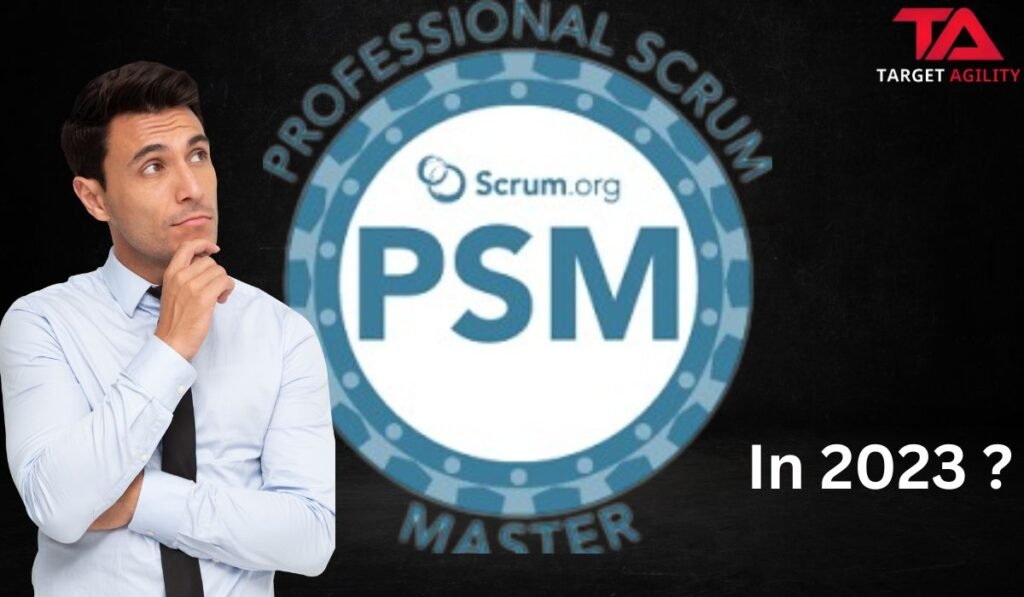
As we step into 2023, staying on top of the professional game is crucial. One surefire way to do this is by getting a Professional Scrum Master (PSM) certification. It’s a powerful tool that can give your career a significant boost, and in this blog, we’ll break down why. In the fast-paced world we live in, businesses are all about being quick and adaptable. PSM certification teaches you how to make teams more agile, and that’s a skill employers are looking for. With industries leaning towards agility, having a PSM certification puts you in sync with what the job market wants. PSM certification doesn’t just teach you about Scrum (the agile framework it’s based on); it also hones your project management skills. Scrum focuses on working in small, efficient steps and constant improvement. By getting PSM certified, you learn not just to implement Scrum but also to be adaptable and responsive – crucial traits for managing projects in today’s speedy business world. As companies embrace agility, having a PSM certification becomes a game-changer for your career. If you’re a project manager, team lead, or aiming for higher positions, PSM certification gives you an edge. It opens up new job opportunities and shows that you’re committed to keeping up with the latest and best practices in the industry. One great thing about PSM certification is that it’s known globally. In a world where businesses operate across borders, having a certification that’s respected everywhere is a big plus. PSM certification not only says you’re skilled in agile practices but also boosts your professional reputation, making you a valuable asset for employers worldwide. Scrum, the heart of PSM certification, promotes collaboration and self-organization. PSM-certified individuals know how to build a culture of teamwork and improvement in their teams. By using Scrum practices, you can make your team more productive, adaptable, and communicative – qualities that are crucial in today’s collaborative work settings. 2023 is bringing a lot of changes and uncertainties. PSM certification doesn’t just teach you how to handle these challenges; it also prepares you to be adaptable. By embracing agile principles, PSM-certified individuals can tackle evolving project needs, market shifts, and changing customer expectations, making them valuable assets in a world that’s always changing. Getting PSM certified is just the beginning. The world of Scrum and agile methodologies is always evolving, and PSM-certified professionals are encouraged to keep learning. This commitment to ongoing learning not only boosts your knowledge but also keeps you ready to contribute to your organization’s success in a world that’s always evolving. Conclusion In a nutshell, getting a PSM certification in 2023 comes with a bunch of benefits. From meeting the needs of agile-focused industries to improving project management skills, opening up career opportunities, and gaining global recognition – PSM certification is a key to professional success. As we navigate through the changes and opportunities in the years to come, investing in a PSM certification is like investing in yourself – a step towards not just staying in the game but excelling in the rapidly changing world of business.
Boosting Your Career: Unleashing Opportunities with PSM, SAFe, and PSPO Certifications

In today’s dynamic and competitive professional landscape, continuous learning and skill development are paramount for career advancement. Earning certifications in high-demand areas like project management and Agile methodologies can significantly enhance your employability and open doors to new opportunities. Among the most sought-after certifications are PSM (Professional Scrum Master), SAFe (Scaled Agile Framework), and PSPO (Professional Scrum Product Owner) credentials. These certifications demonstrate your expertise in leading and managing successful Agile projects and can help you achieve your career goals. The Significance of PSM, SAFe, and PSPO Certifications PSM, SAFe, and PSPO certifications are globally recognized and valued by employers across industries. They validate your proficiency in Scrum, the Agile framework that has revolutionized software development and project management. By earning these certifications, you can: PSM Certification: Mastering Scrum Mastery The PSM certification is the gold standard for Scrum Masters, recognizing their expertise in facilitating and leading successful Scrum projects. It validates your ability to: SAFe Certification: Navigating the Scaled Agile Landscape The SAFe certification demonstrates your proficiency in the Scaled Agile Framework (SAFe), a comprehensive framework for scaling Agile methodologies across large organizations. It validates your ability to: PSPO Certification: Empowering Product Owners The PSPO certification validates your expertise as a product owner, the role responsible for defining, managing, and prioritizing product backlog items. It demonstrates your ability to: Unleashing the Power of Certifications Earning PSM, SAFe, and PSPO certifications can transform your career trajectory. These certifications not only enhance your marketability and earning potential but also empower you to lead and manage complex projects effectively. By investing in professional development and pursuing these industry-recognized credentials, you can position yourself for success in the ever-evolving world of project management and Agile methodologies.
Diving into PSM2 without PSM1: Is it a Good Idea?

In the world of project management and agile methods, Scrum is a big deal. Getting certified in Professional Scrum Master (PSM) shows you know your stuff when it comes to Scrum. But what if you want to jump straight to PSM2 without doing PSM1 first? Let’s break it down. Scrum Certifications 101 First things first, let’s talk about Scrum certifications. PSM1 is like the starting point, testing your basic understanding of Scrum. It covers the basics like the Scrum framework, roles, events, and artifacts. PSM2 comes next, delving into more advanced concepts and how you can use Scrum in tricky situations. PSM1: Is it a Must? Now, the big question: do you have to do PSM1 before PSM2? Nope, it’s not a must. Scrum.org, the folks behind these certifications, don’t say you have to do PSM1 first. But, there’s a catch. Skipping PSM1 means you’re skipping the basics, and that can have consequences. What PSM1 Gives You PSM1 is like a launching pad. It gets you comfortable with the basics of Scrum. Skipping it means you’re jumping into the deep end without knowing how to swim. PSM2 Without PSM1: Challenges Here are the challenges you might face going straight to PSM2: 1. What You Don’t Know: PSM2 assumes you know the basics from PSM1. Without that, you might find it tough to understand the advanced stuff. 2. Applying the Knowledge: PSM2 isn’t just about knowing stuff; it’s about using Scrum in tricky situations. PSM1 prepares you for this. Without it, applying what you know in PSM2 could be tough. 3. It’s a Bit Tougher: PSM2 is more advanced, and without PSM1, you might find it harder to pick up on the complex parts of Scrum. How to Make it Work If you’re set on doing PSM2 without PSM1, here are some tips: 1. Study Hard: Learn as much as you can about Scrum from books, websites, and real-world examples. 2. Try it Out: Get involved in Scrum projects or teams. Putting what you learn into practice helps a lot. 3. Get Help: Connect with experienced Scrum folks. Having a mentor can guide you and make things a bit easier. The Bottom Line The choice to skip PSM1 and head straight to PSM2 is entirely up to you. Whether you go the usual PSM1-PSM2 way or take the direct route to PSM2, what matters most is understanding Scrum, using it in your work, and keeping the Scrum spirit alive. It’s not just about certifications; it’s about living and breathing Scrum every day.
Easy Ways to Keep an Eye on Your Scrum Team’s Progress
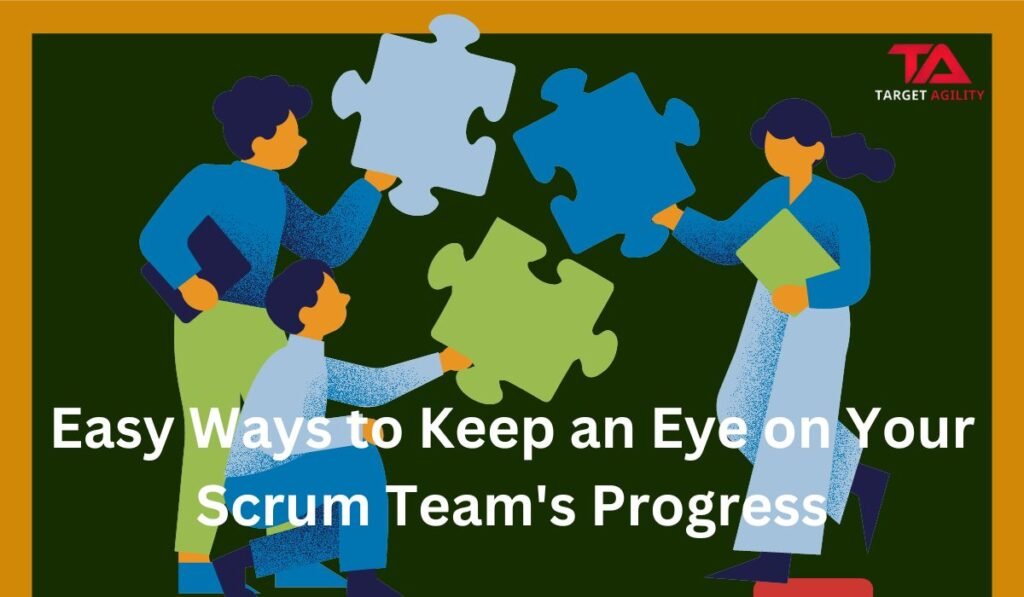
In the world of software development, Scrum teams work together to get things done. To make sure your Scrum team is doing well, it’s important to measure and track their progress. In this blog, we’ll explore simple ways to do that without getting too complicated. Defining Success: Figuring Out What Matters Before we start, let’s think about what success means for your team. Look for signs like how much work gets done in a sprint or if the team is facing any challenges. These signs are called key performance indicators (KPIs), and they help you see if you’re on the right track. Burndown Charts: Watching Work Disappear Imagine a chart that shows how much work is left in a sprint. That’s a burndown chart. A good burndown chart goes down steadily, showing progress. If it goes all over the place, it might mean there are problems or changes happening. Sprint Burnup Charts: Keeping an Eye on Workload Sprint burnup charts help you see if the team is finishing what they planned for a sprint. It’s like checking if you’re on track with your to-do list. If everything is going smoothly, the chart looks balanced. If there are sudden increases, it could mean unexpected work or changes in plans. Velocity: Checking How Fast You’re Going Velocity is a fancy word that means how much work your team can do in a sprint. Keep an eye on it over time. If it stays about the same, your team is doing well. Big changes might mean something is going wrong or the team is adjusting to new things. Cycle Time: Counting the Days Cycle time is how long it takes to finish a task from start to finish. Short cycle times are good—it means things are moving quickly. If it takes a long time, there might be problems that need fixing. Escaped Defects: Checking for Mistakes Nobody likes mistakes. Escaped defects are like problems that sneak through and are found later. Try to have as few of these as possible by doing thorough testing and fixing issues before they become big problems. Team Satisfaction: Keeping Everyone Happy Beyond all the numbers, it’s important to make sure your team is happy. Ask them how they feel and if they’re facing any challenges. A happy team works better and produces better results. Adapt and Iterate: Changing Course When Needed Remember, it’s okay to change things if they’re not working. Keep checking if your measurements make sense, and if they don’t, find new ones. Being flexible and always trying to improve is the key to success. Conclusion: Sailing Smoothly Measuring your Scrum team’s progress is like navigating a ship. By using simple tools like burndown charts, velocity, and keeping the team happy, you can steer your ship in the right direction. The journey might have some ups and downs, but with a flexible and positive approach, your Scrum team can sail smoothly to success.

